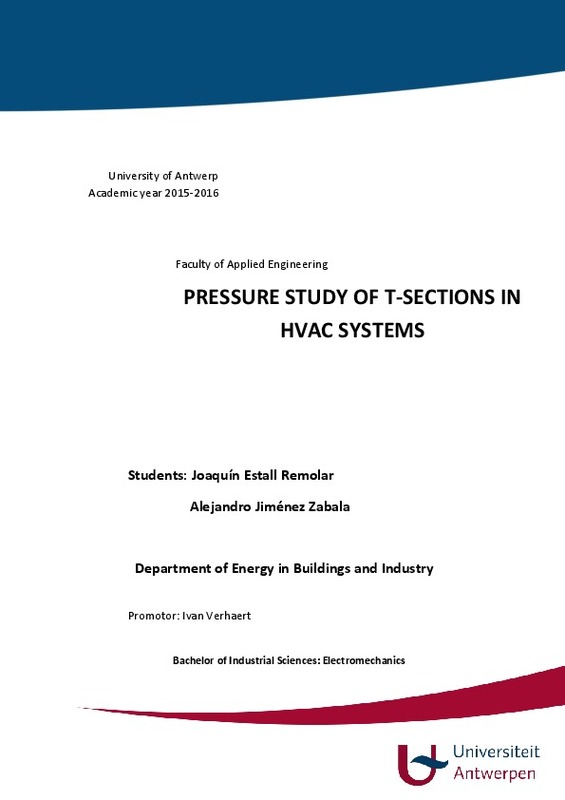JavaScript is disabled for your browser. Some features of this site may not work without it.
Buscar en RiuNet
Listar
Mi cuenta
Estadísticas
Ayuda RiuNet
Admin. UPV
Estudio de presiones en secciones en T en sistemas de calefacción, ventilación y aire acondicionado
Mostrar el registro completo del ítem
Jiménez Zabala, A. (2016). Estudio de presiones en secciones en T en sistemas de calefacción, ventilación y aire acondicionado. Universitat Politècnica de València. http://hdl.handle.net/10251/77851
Por favor, use este identificador para citar o enlazar este ítem: http://hdl.handle.net/10251/77851
Ficheros en el ítem
Metadatos del ítem
| Título: | Estudio de presiones en secciones en T en sistemas de calefacción, ventilación y aire acondicionado | |||
| Autor: | Jiménez Zabala, Alejandro | |||
| Director(es): | ||||
| Entidad UPV: |
|
|||
| Fecha acto/lectura: |
|
|||
| Resumen: |
[EN] The aim of this work is to study the changes in pressure in T-sections in junctions of air conditioning systems, and the study of classical designs of flow ducts as well as the equations and theories used to obtain ...[+]
[ES] El objetivo de este trabajo es estudiar los cambios en la presión en las secciones en T en los cruces de los sistemas de aire acondicionado, y el estudio de los diseños clásicos de conductos de circulación, así como ...[+]
|
|||
| Palabras clave: |
|
|||
| Derechos de uso: | Reserva de todos los derechos | |||
| Editorial: |
|
|||
| Titulación: |
|
|||
| Tipo: |
|
recommendations
Este ítem aparece en la(s) siguiente(s) colección(ones)
-
ETSID - Trabajos académicos [8709]
Escuela Técnica Superior de Ingeniería del Diseño







